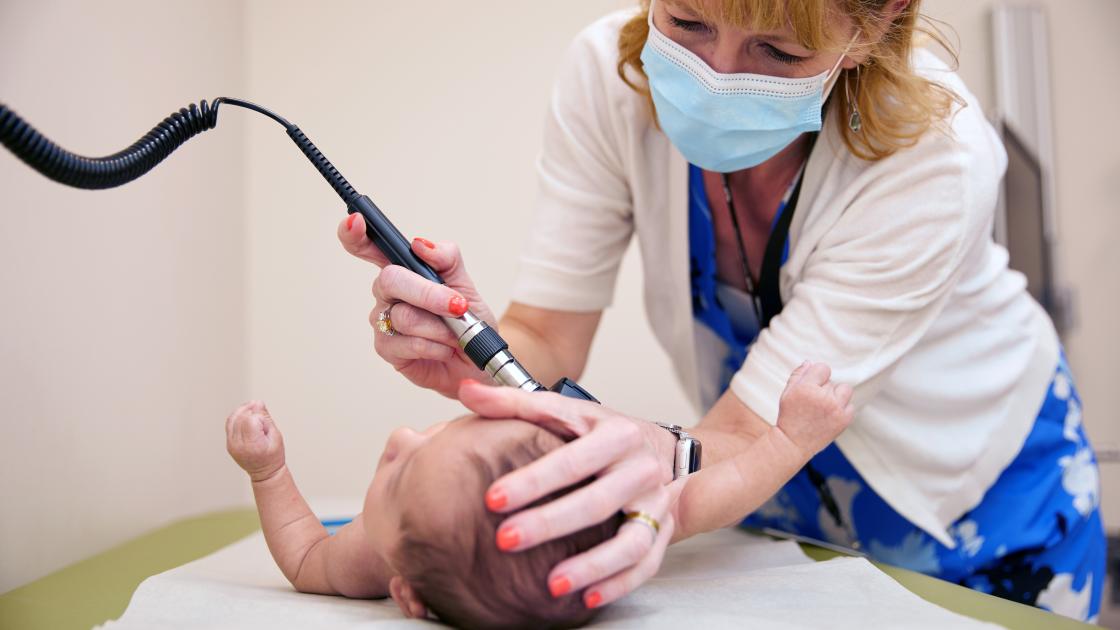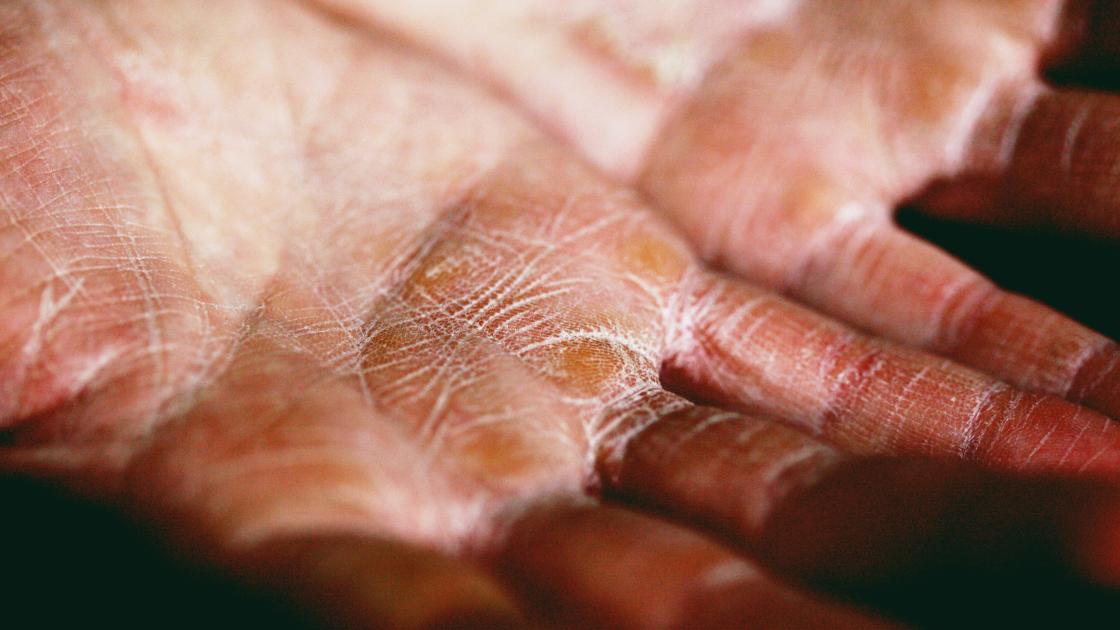
Is it an ear infection? Recognize the symptoms and find the right care
More than 70% of babies have an ear infection before their first birthday, but this common childhood illness is notoriously hard for parents and even physicians to diagnose.
An ear infection, medically known as otitis media, occurs when the middle ear, the air-filled space behind the eardrum, becomes inflamed and infected. This can happen when bacteria or viruses from a cold, sore throat or respiratory infection travel to the middle ear. Ear infections are widespread in children because their Eustachian tubes, which connect the middle ear to the back of the throat, are shorter and more horizontal than in adults, making it easier for germs to reach the middle ear.
Signs of an ear infection
Because ear infections are so common, parents need to recognize signs that could indicate the problem. The first signs that your child is sick might be increased irritability, difficulty hearing or responding to sounds or pulling or tugging at their ear.
If the problem is an outer ear infection you might also notice
- Redness and swelling of the ear canal
- Itching inside the ear
- Drainage of clear or yellowish fluid
Middle ear infections often present with
- Sharp, sudden ear pain
- Fluid drainage from the ear
- Feeling of fullness or pressure in the ear
- Reduced hearing ability
- Fever
- Difficulty sleeping
- Balance problems or dizziness
Diagnosis and Treatment
If you suspect your child has an ear infection, seeing a pediatrician is essential. The doctor will examine your child’s ear with an otoscope to look for signs of infection. Treatment often depends on the severity and frequency of the infections.
- Observation- In some cases, especially if the infection is mild, the doctor may recommend a wait-and-see approach, as many ear infections resolve on their own.
- Antibiotics- Antibiotics may be prescribed if the infection is severe or persistent.
- Pain Management- Over-the-counter pain relievers like acetaminophen or ibuprofen can help alleviate pain and reduce fever. For very mild cases applying a warm compress to the ear can help.
- Hydration- Use the ORT method to keep (link)your child hydrated, which will help with other uncomfortable symptoms.
When to Seek Medical Attention
While most ear infections clear up without complications, it’s important to seek medical attention if your child experiences
- Severe pain
- High fever
- Symptoms lasting more than a few days
- Fluid or pus draining from the ear
Risk factors for ear infections
Ear infections are more common in male children under age three. Premature babies are also more susceptible; like the cold and flu, ear infections occur more frequently in winter.
Other risk factors for ear infections include:
Other medical conditions
- Genetic conditions like a cleft lip or cleft palate
- Down Syndrome
- Weakened immune system
- Family history of ear infections
- Recurrent respiratory infections
- Allergies
Anatomical factors
- Shorter, horizontal Eustachian tubes
- Larger, rounder adenoids
Lifestyle factors
- Exposure to secondhand smoke
- Group childcare where germs spread easily
- Extensive use of pacifiers, especially during sleep
- Seasonal changes
- Bottle-feeding while lying down
Preventing ear infections
“Prevention is the best way to ward off peksy, painful ear infections,” says Dr. SIU pediatrician Dr. Tracy Milbrandt. Dr. Milbrandt offers the following advice:
- Get vaccinated. The flu vaccine and pneumococcal vaccine offer protection against common causes of middle ear infections.
- Use common-sense health habits. Wash your child’s hands frequently, teach them to sneeze and cough into their elbow, dry ears after swimming and instruct kids not to share drinks or eating utensils.
- Breastfeed. Breastfeeding exclusively for the first six months is linked to a lower rate of ear infections. If you do bottle-feed hold the baby in an upright position.
- Avoid pacifiers. Stop using pacifiers after the age of six months.
- Limit group child care. The less time a child spends in group care the less opportunity they have to pick up germs.
- Don’t smoke. Secondhand smoke contributes to childhood ear infections.
SIU Pediatrics is ready to help you treat childhood ear infections and to help you manage your children’s physical, behavioral and mental health. Contact us today to find the right pediatrician for your family.



